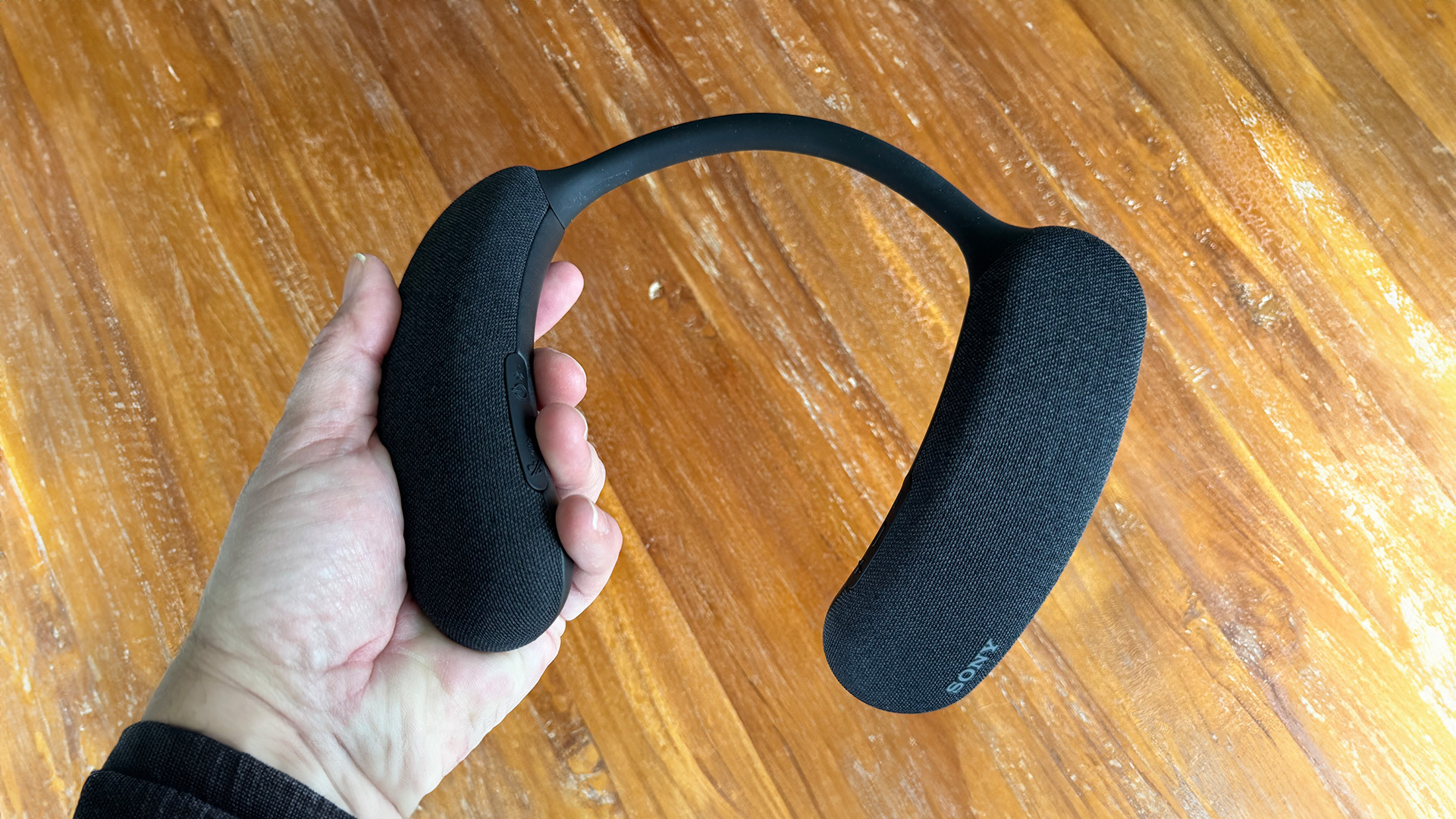What Hi-Fi? Verdict
While more bass would be nice, the Theatre U is easily the best audio device we’ve ever hung around our necks
Pros
- +
Class-leading sound quality
- +
Exceptionally comfortable design
- +
Low-latency wired gaming connection
Cons
- -
Doesn’t deliver truly personal listening
- -
Faffy to set up
- -
Sound is light on bass
Why you can trust What Hi-Fi?
Sony’s new Bravia Theatre U (aka HT-AN7) is the brand’s third stab at what it calls a Wireless Neckband Speaker.
Translated, that means an audio device sporting upfiring speakers built into small ‘shoulder pads’ attached to a flexible neck strap. It’s designed to give you a personal audio experience without you having to encase your ears in a pair of headphones.
Of course, the simple existence of countless headphones available in all sorts of different shapes and sizes for personal listening immediately raises questions about just how many people might truly benefit from a wireless neckband speaker such as the Theatre U. Especially as previous neckband speakers we’ve tested haven’t exactly rocked our world in performance terms.
Hope springs eternal at What Hi-Fi?, though, so let’s get stuck into Sony’s Bravia Theatre U with our fingers crossed that it finally wakes us up to the potential of this most niche of audio devices.
Price
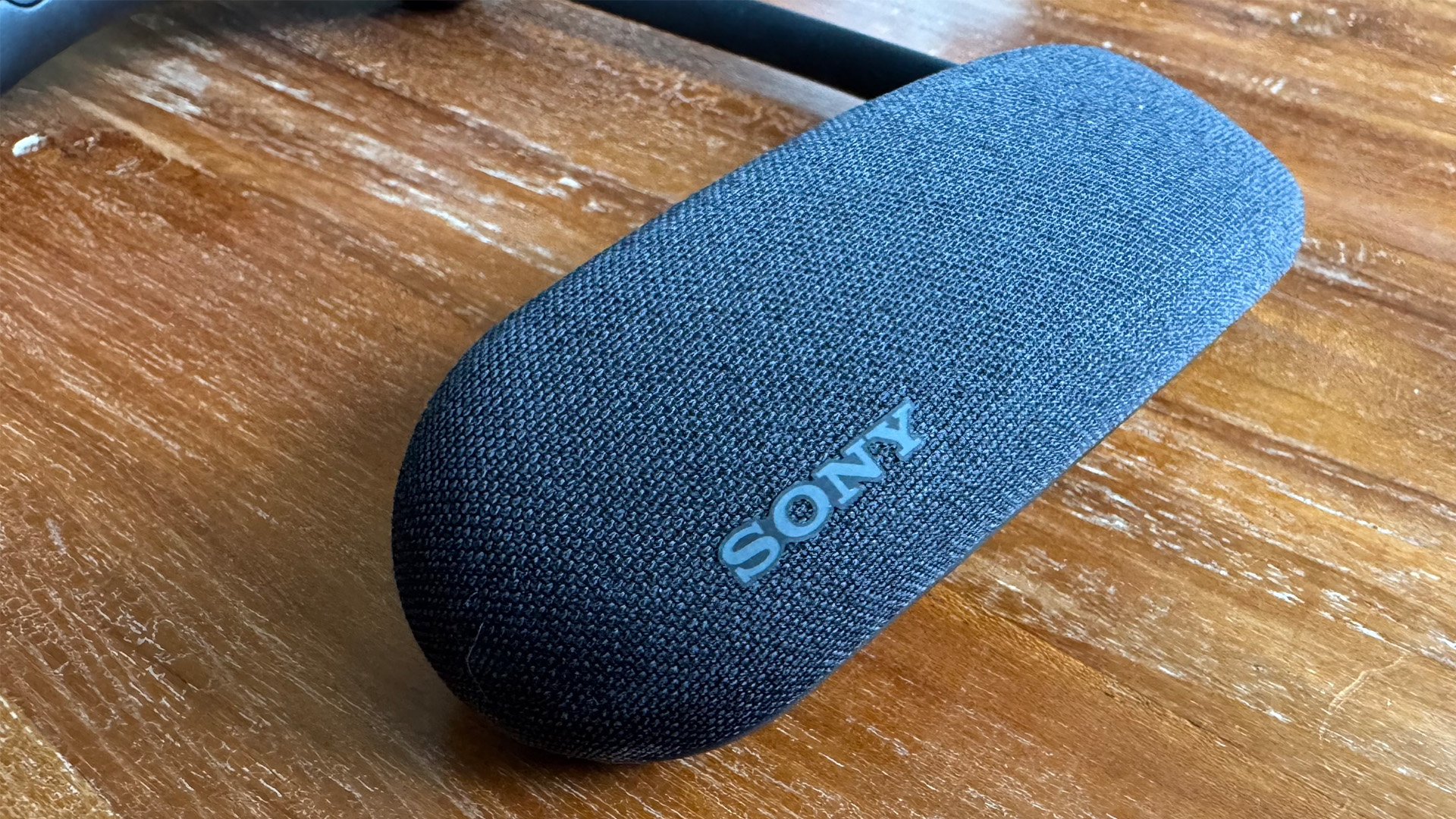
The Bravia Theatre U is available for £239 in the UK at the time of writing, and its seemingly niche approach to sound hasn’t stopped Sony releasing it on a worldwide basis; you can pick one up in the US for $300, for instance, and in Australia for $499.
This pricing initially looks a bit steep when you think of the level of headphone performance you might get for that sort of money.
As we’ll see, though, Sony has squeezed some pretty serious tech into its latest neckband speaker – and creating any decent-sounding speaker system that’s light enough and thin enough to rest on your collar bones without feeling cumbersome is actually always going to be a serious technical challenge.
The latest hi-fi, home cinema and tech news, reviews, buying advice and deals, direct to your inbox.
Design
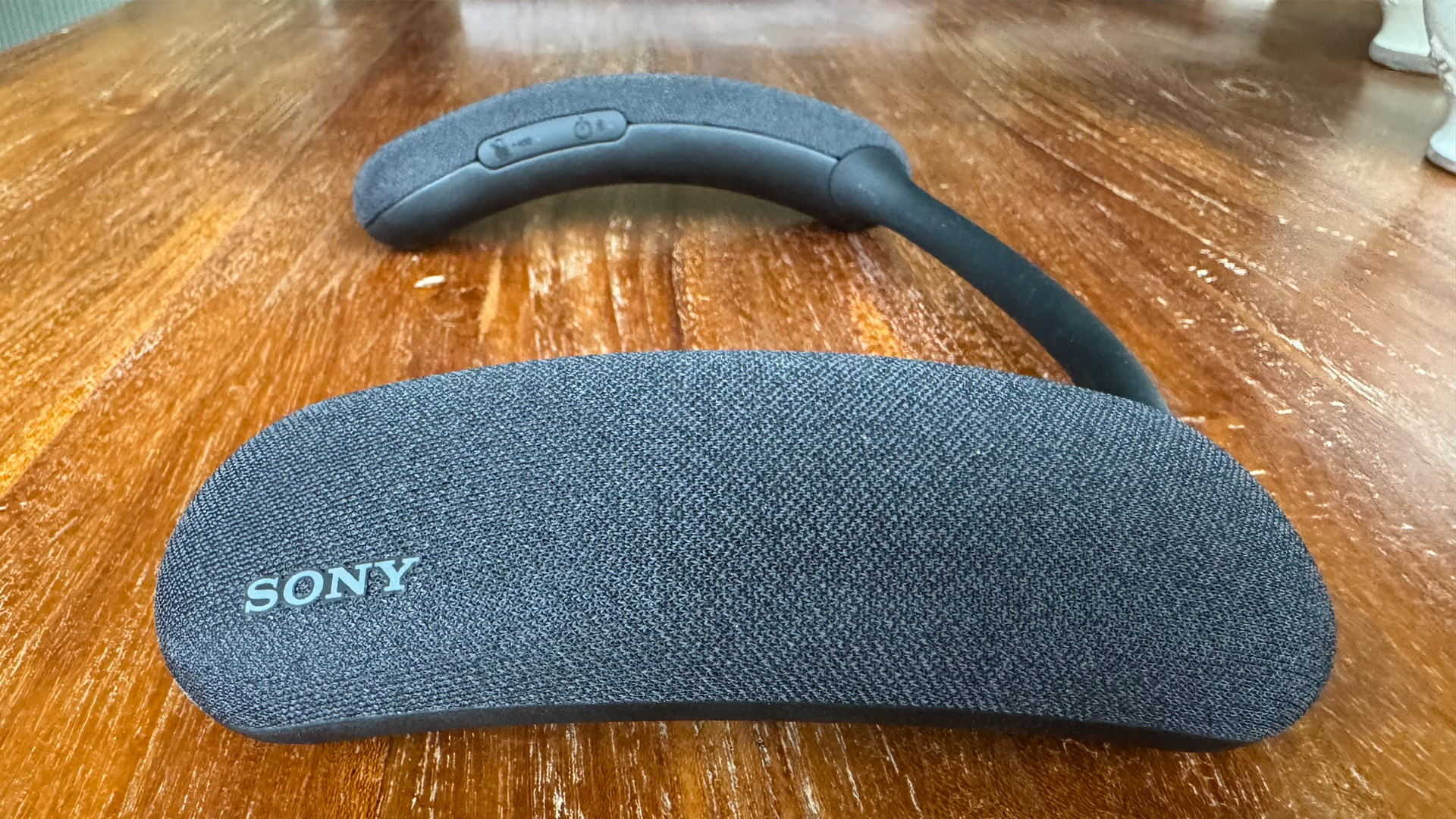
The Bravia Theatre U features two elongated speaker ‘lozenges’ attached to either end of a rubberised, flexible neckband. The speaker parts feature a felt upper side to permit egress of their sound, while their gently arced undersides carry a black, again slightly rubberised, finish.
The neckband is flexible enough to accommodate a wide range of shoulder and neck sizes without becoming strained, and both the neckband and shoulder speakers are light and ergonomic enough to sit in place without feeling cumbersome or heavy over even very extended usage periods.
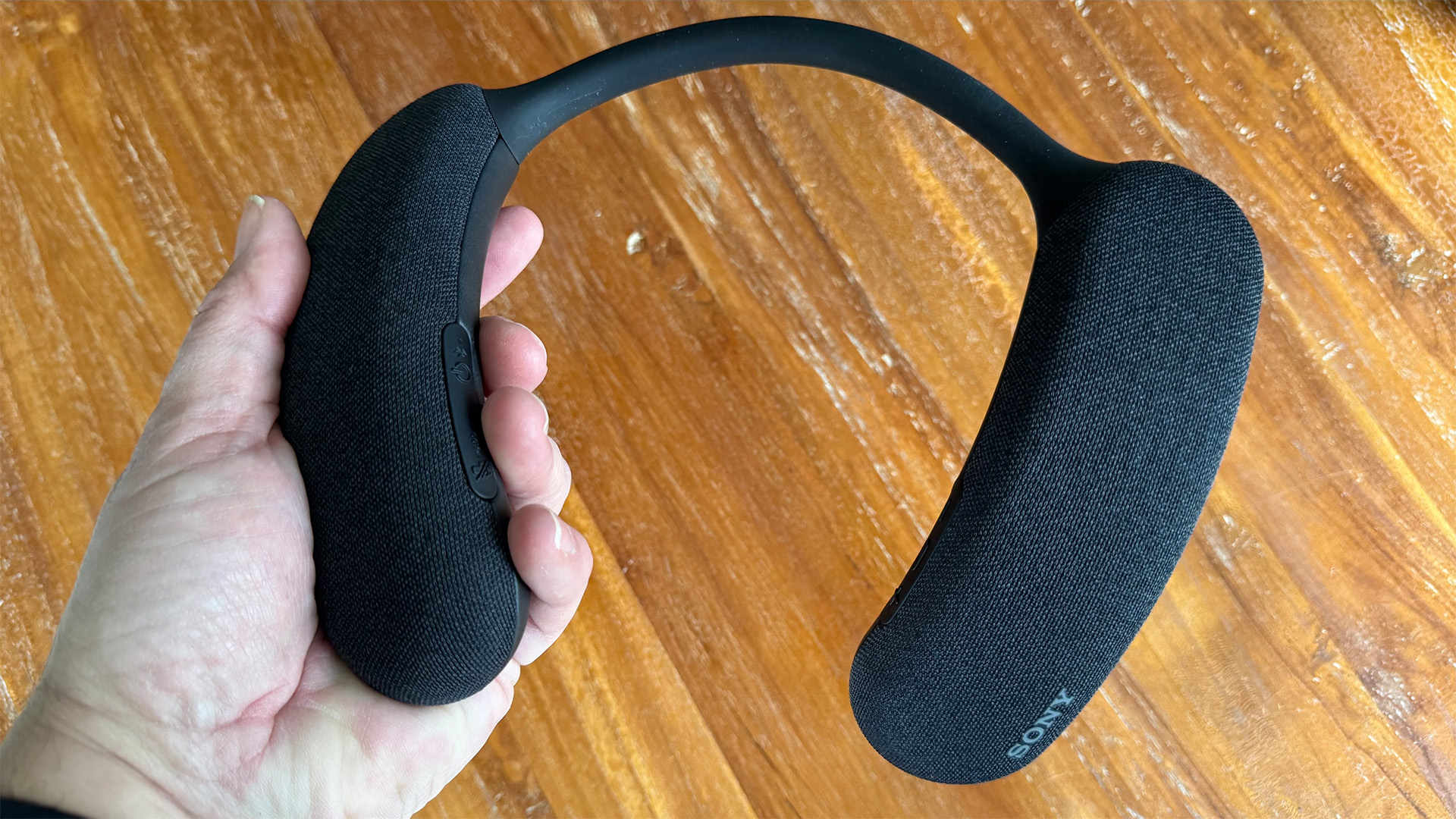
Bluetooth 5.2
Features Dolby Atmos, 360 Reality Audio
Connections USB-C, dedicated audio input
Battery Life Up to 12 hours
Finishes x 1
Weight 268g
There’s really no significant pressure at all on sensitive areas of your body, so they really are more comfortable to wear than many headphones.
For the most part, the Theatre U also adapts better to the movement of your neck or body than we expected. So you can walk around with it on without worrying about it falling off or irritating your skin, or you can shift position on the sofa without it suddenly no longer sitting quite right.
On the outside edge of the right-hand speaker lozenge is a USB-C port that can be used for both charging the neckband for wireless use, or attaching a direct audio cable (the necessary cable and adaptor are included) that supports low-latency gaming sound playback.
On the inside edge of the left speaker are buttons for power, Bluetooth pairing and turning on or off an internal mic, while on the inside of the right speaker pad are simple volume control buttons.
Features
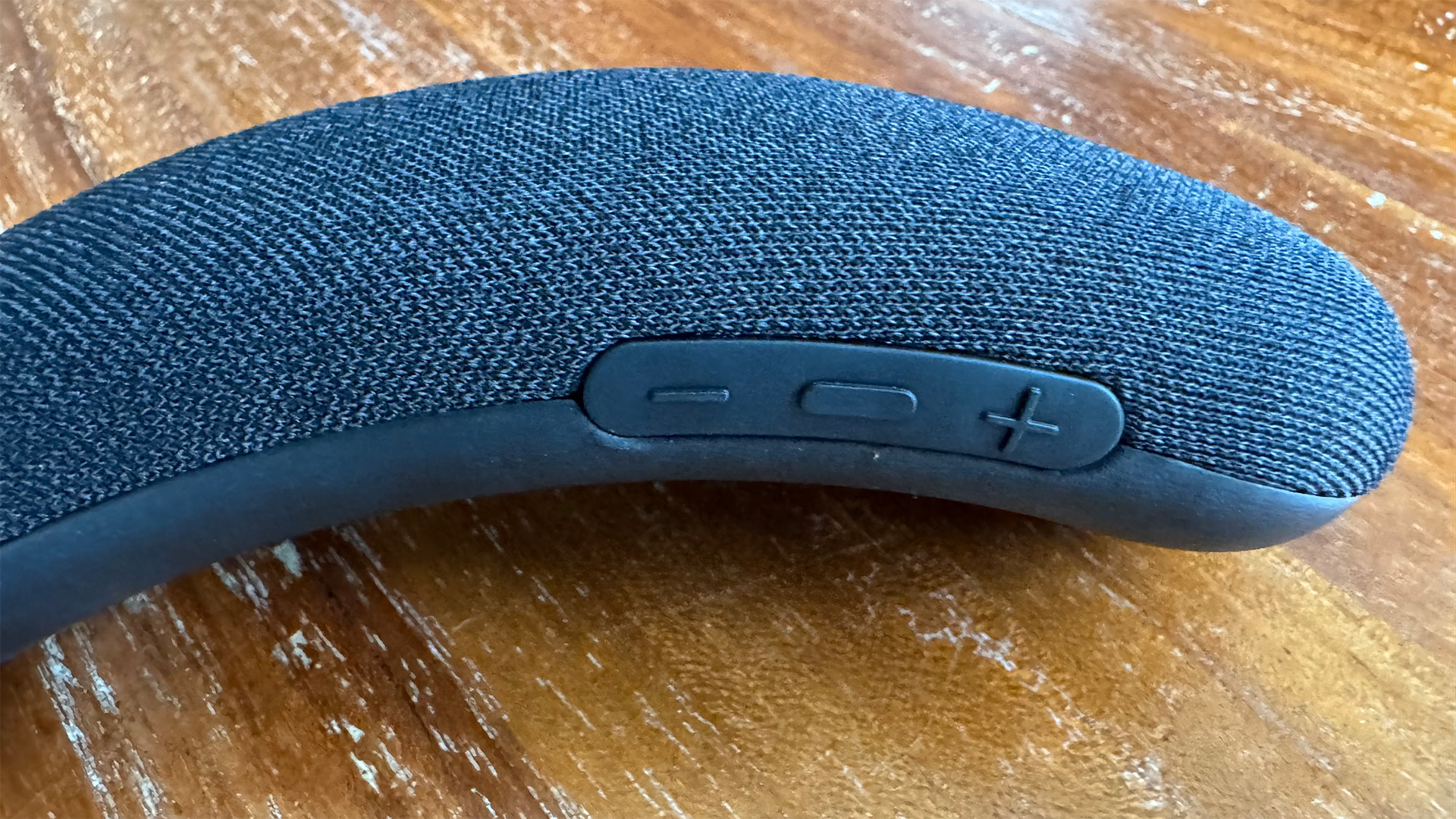
To some extent, the unusual design and audio approach of the Bravia Theatre U is its main feature. It’s not unique; for instance, Sony had two previous stabs at it, including 2022’s SRS-NS7, while Panasonic has launched a couple of models, including the current GN01E and more premium ‘Sound Slayer’ GNW10E models specifically targeted at gamers. It’s certainly true to say, though, that it remains a fairly atypical approach to take to delivering a personal sound experience.
Like Panasonic, Sony sees the gaming market as a potentially strong audience for the Bravia Theatre U. The first demonstrations we were given of it focused heavily on gaming content; the built-in mic enables it to be used as a gaming headset where you can talk to your teammates or trash talk your opponents; and the option is provided to attach your console or PC to the Theatre U using a physical connector to reduce audio latency.
Sony’s ambitions for the Theatre U don’t stop at gaming, though. It’s also sold as a potential work tool, for instance, with Multipoint connectivity, where two Bluetooth devices such as a laptop and a smartphone can be connected to it simultaneously, enabling you to switch between audio sources at the press of a button. The Theatre U can switch automatically to the right source when an incoming phone call is detected, too, while an AI-based noise reduction algorithm works to maintain phone call clarity no matter what’s going on around you.
Sony is confident enough in the abilities of the Theatre U, too, to have put some serious effort into making it an effective music and movie player. The full-range, 44 x 32mm speakers tucked inside each side of the Theatre U use Sony’s X-Balanced technology, which maximises the speaker diaphragm to achieve increased sound pressure and reduced distortion despite the neckband speaker’s inevitably shallow design.
These speakers are combined with clever virtual speaker processing, too, to make them capable of delivering both Dolby Atmos surround-sound mixes and Sony’s 360 Reality Audio technology.
The latter technology works by carefully creating a full surround-sound speaker array of virtual speakers based on detailed analysis by a specific 360 Spatial Sound Personalizer app of your specific ear shape and hearing profile.
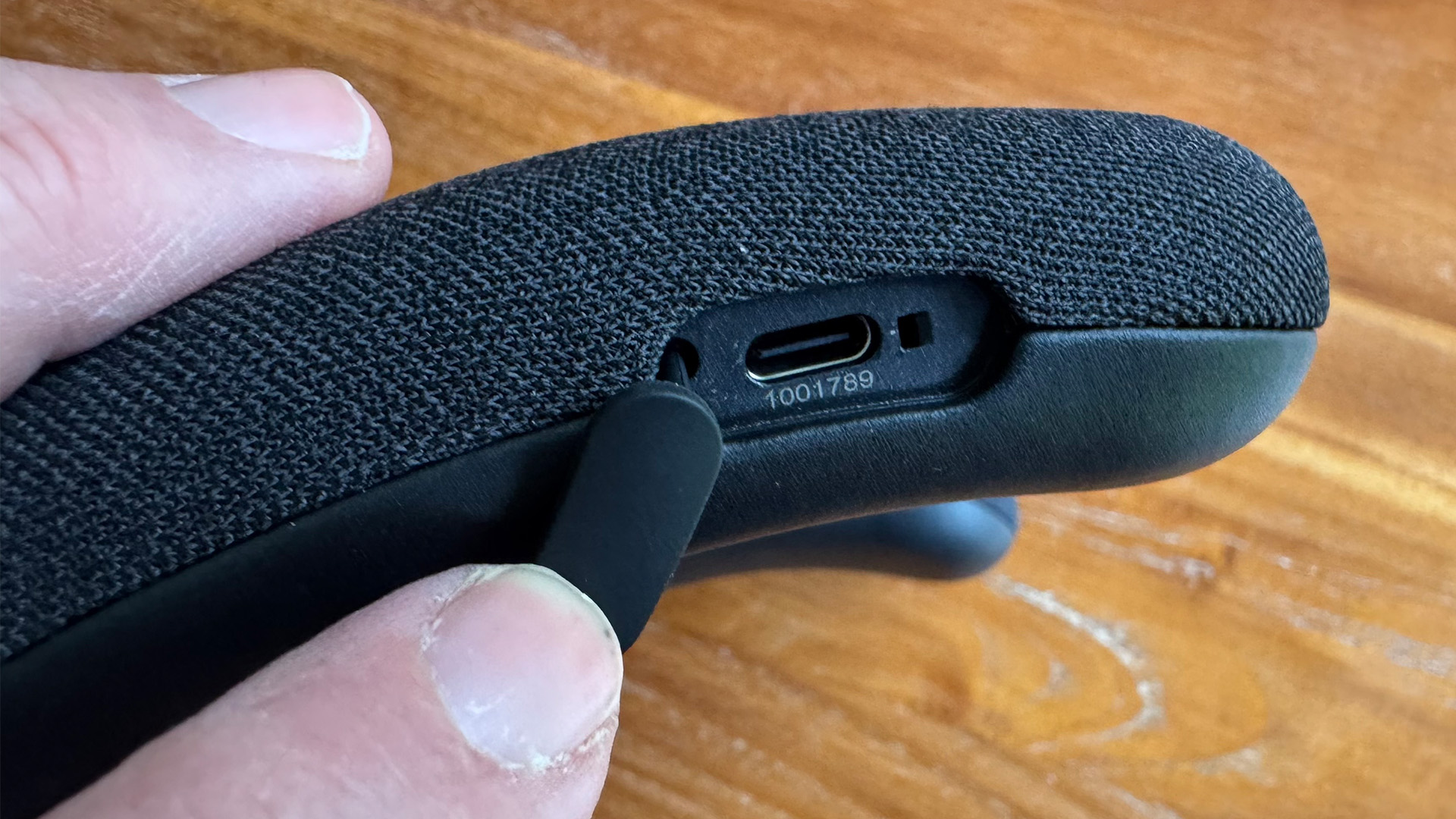
Sony has also made it possible for households to connect two Bravia Theatre U speakers to a single TV or other audio device, so that two people can listen to the same source but with different volumes or sound profiles, as suits their tastes or hearing needs. Or a Sony Bravia TV’s speakers can be instructed to play sound from a film or TV show at the same time that it shares that sound with a Theatre U so that, say, one person can still hear the show at a volume of their choosing as they potter about doing something else while other family members watch the show on TV.
The inclusion of 360 Spatial Audio makes the Bravia Theatre U a bit of a faff to set up, it has to be said. You first need to work with the 360 Spatial Sound Personalizer app to optimise the sound to your personal hearing abilities, before then needing the 360 Reality Audio app to get access to full surround music mixes in that format, as well as needing a separate Sony Sound Connect app to control and monitor the Theatre U from your phone.
And, just for a bit of added confusion, the Sony Sound Connect app is different to the Bravia Connect app required to control Sony’s latest soundbars, despite those soundbars sharing the same Bravia Theatre naming convention.
While the wired connection option for gaming is welcome, the Bravia Theatre U is clearly – as its Wireless Neckband Speaker name implies – at its most convenient when running on battery power and playing sound wirelessly. So it’s handy that the Theatre U’s battery is claimed to last for up to 12 hours on a single charge at a ‘typical’ volume level. What’s more, if you get caught short on the battery front, a quick-charge feature lets you feed the Theatre U enough power from just 10 minutes of charging to give you an hour of wireless use.
Comfort
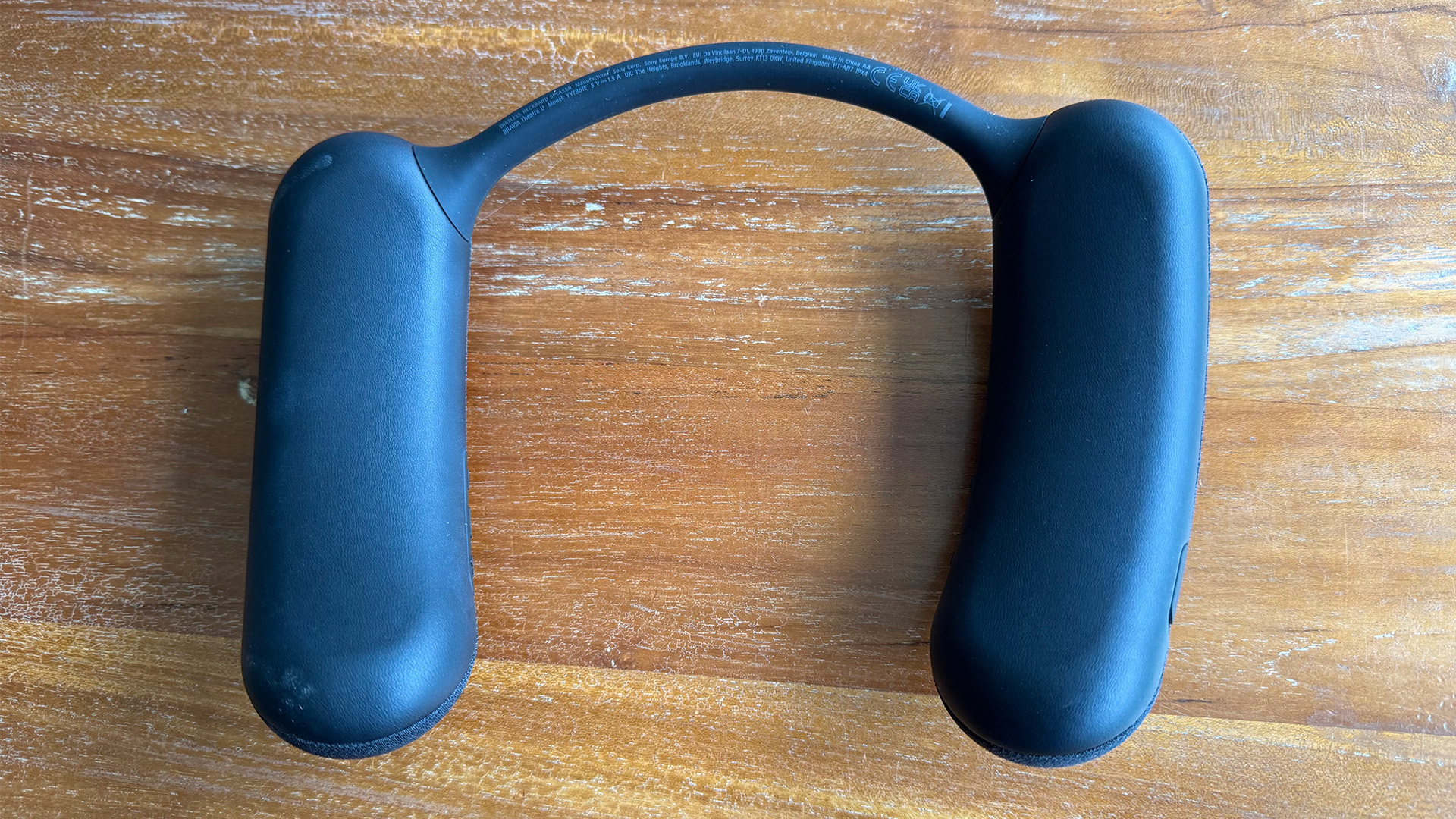
Before getting into how the Bravia Theatre U sounds, we should spend a moment discussing how comfortable it is. After all, this is potentially one of the main reasons someone might consider a neckband speaker design over a pair of headphones. So it’s great to be able to report that the Theatre U is almost uncannily comfortable.
The length and sculpting of the speakers means they spread what little weight (268g) they have so evenly across your shoulders and collarbone that you barely notice they’re there, even over really long listening sessions. There’s no sense of the underside of the speakers becoming clammy, either.
The neckband similarly causes no irritation or clamminess on the back of your neck, and its length and level of flexibility ensure the speakers are able to move with you without feeling like they’re wrestling against you.
The Bravia Theatre U also does an excellent job of limiting the vibrations that emerge from its underside and into your collarbone. It’s not totally immune to this slightly uncomfortable sensation, but it typically only happens, slightly, when you’re listening to music with particularly heavy basslines. We scarcely notice it at all while gaming or watching films.
Sound
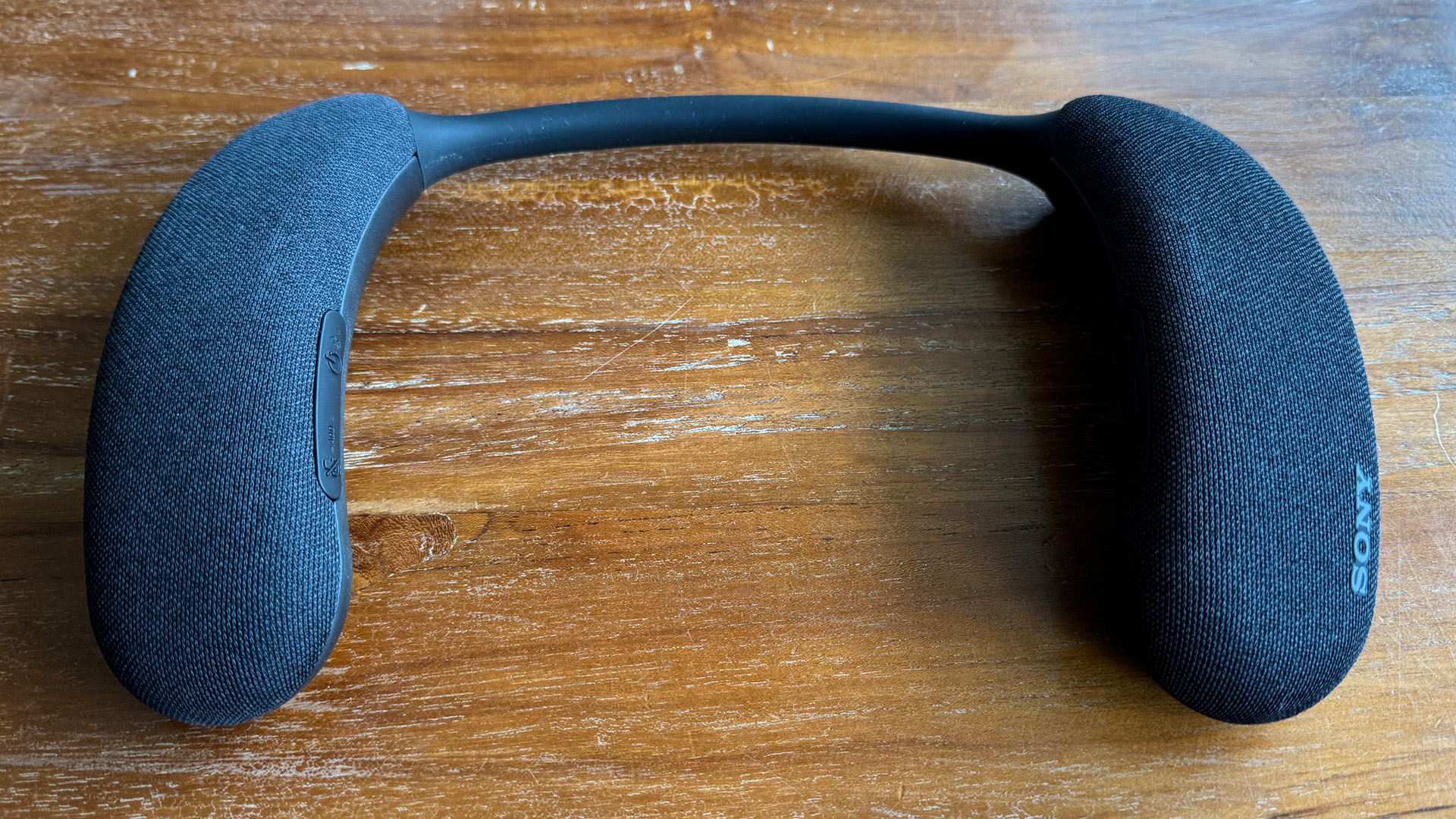
Having ticked the key comfort box, the Bravia Theatre U pulls off an even bigger surprise by also managing to sound far more compelling than any other similar product we’ve tried.
For starters, despite having very little depth to work with, its two speakers manage to produce enough power to deliver plenty of volume – more at the upper volume settings than most people with regular hearing will likely be able to stand, in fact.
While being able to produce enough volume to take over your senses and overwhelm most ambient sounds around you is immediately a great bonus over the rather feeble sounds usually associated with such products, though, the way the Theatre U uses its power to create a startlingly convincing three-dimensional soundstage is actually more important.
Sound effects are thrown far enough away from the drivers and placed with such precision in what feels like a genuine dome of sound around your head that you almost completely forget that the immersive sound you’re experiencing is coming from a couple of skinny speakers draped across your shoulders.
With Dolby Atmos and, especially, 360 Spatial Audio soundtracks and music, it feels as if you’ve shoved your head into a goldfish bowl of speakers.
In fact, the Theatre U delivers arguably the single finest example we’ve experienced of just how effective Sony’s 360 Spatial Audio system is at conjuring virtual speakers out of thin air.
The effects and three-dimensional staging are done so well, too, that nothing about it feels forced or unnatural, and no details appear exaggerated or misplaced.
To give you a simple example of just how well the Bravia Theatre U’s sound staging works, while playing Call Of Duty in Dolby Atmos, if someone runs around on the floor of a building above you, their footsteps not only clearly sound as though they’re coming from above your head, but you can actually hear which direction they’re moving in.
The staging also manages to create a convincing-enough-to-be-helpful sense of relative distance, so that you get a feel for how close or distant approaching enemies are.
These game-friendly talents translate startlingly effectively to Dolby Atmos film soundtracks, too, putting you right at the heart of carefully crafted surround-sound mixes that again appear detailed and natural without any elements feeling misplaced or overly bright.
Dialogue placement is particularly effective with film soundtracks, sounding locked at the heart of the mix but also slightly in front of you, as it should be – as well as always sounding impeccably clear and intelligible without becoming too exaggerated. Transitions of noisy objects moving around the soundstage are startlingly well presented as well.
Impact sounds such as gunfire and punches have a good sense of grit and hardness to them, meanwhile, and peak treble sounds are presented with richness and authority rather than becoming shrill or warbly.
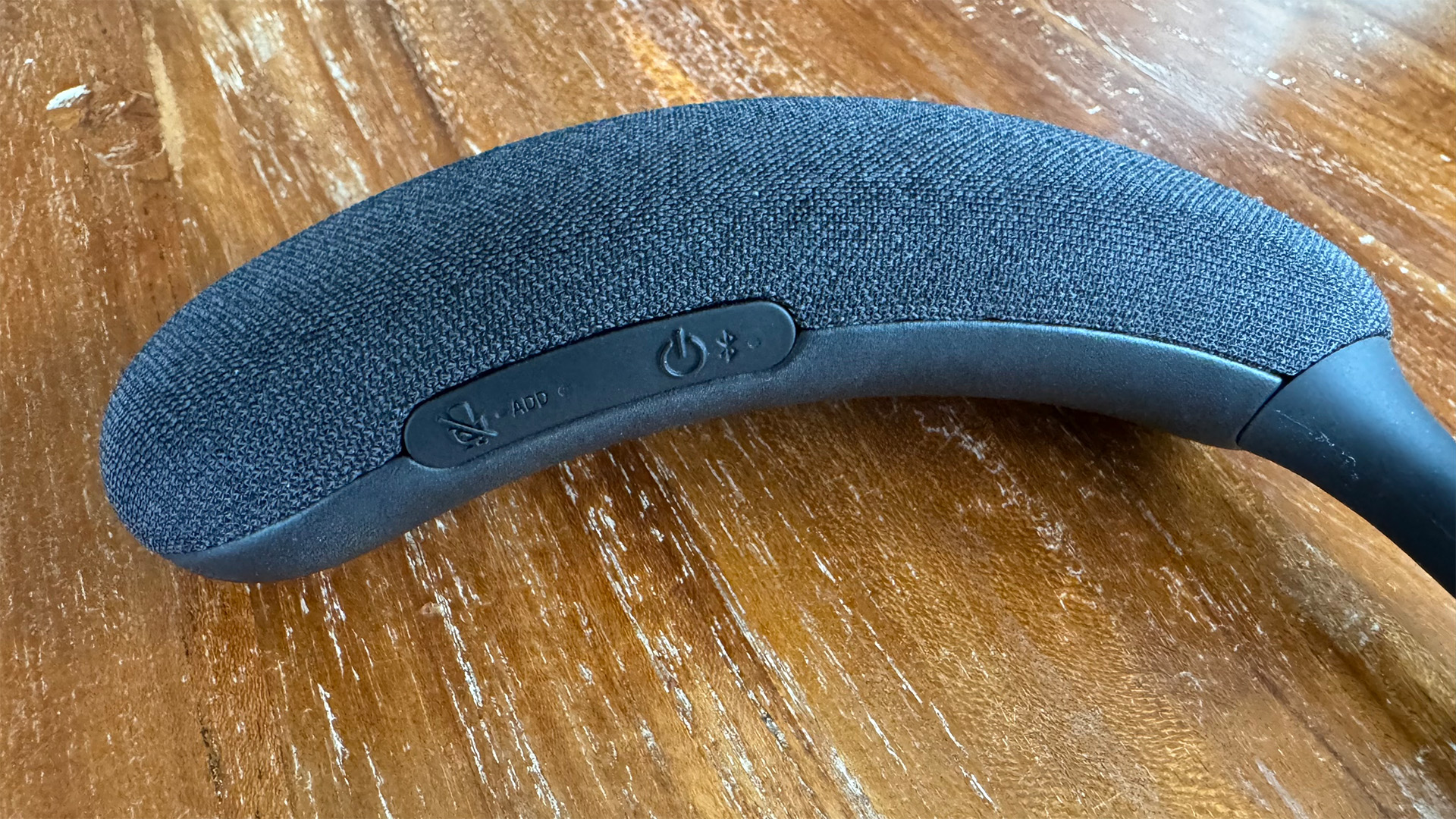
There are, of course, headphones and headphone apps these days that can also create compelling surround-sound effects with Dolby Atmos and, if they’re Sony models, 360 Spatial Audio sources. By creating a three-dimensional sound space that actually exists around your head rather than within your ears, though, there is actually something uniquely (by personal audio device standards) effective about the surround sensation the Theatre U creates.
The good news mostly continues with music, too. For starters, the neckband speaker’s clarity and clean staging deliver an excellent stereo effect, where different elements actually appear at different points across the sound’s horizontal splay. Vocals are again compelling with stereo music, usually appearing locked in the middle of your head, and always sounding crisp and clear without becoming exaggerated.
As you might expect, though, the Bravia Theatre U is at its best musically with surround-sound mixes – specifically Dolby Atmos and 360 Spatial Audio. Such mixes are constructed with verve and clarity, and without sounding forced or artificial. The clarity and staging are so clear with surround music, in fact, that some may find the effect a bit gimmicky with some particularly aggressively mixed tracks. But for the most part, where this happens, it feels more a fault of immature mixing than anything the Theatre U is doing wrong.
While the Bravia Theatre U is miles better than any similar device we’ve tested, though, its unusual approach to sound does inevitably come with one or two strings attached.
First, its sound is pretty light on bass. The neckband speakers produce a reasonably open and punchy mid and treble range, but there just isn’t enough space available to even Sony’s X-Balanced speakers to produce the sort of rumbles movies thrive on or the bass riffs and drum beats some sorts of music, at least, are built on.
We’re not saying bass is completely absent; neither music nor movies sound completely tinny or one-dimensional. The sheer busyness of surround mixes somehow slightly disguises the shortage of bass, too, and it’s a relief to find that what bass there is tends to avoid distortions or dropouts. But there certainly isn’t the sort of impact and presence at the bottom end you would expect to get with a good portable wireless speaker or pair of headphones at the sort of money the Theatre U goes for.
A second issue is that you need to keep your head quite still with music – especially stereo music – to stop vocals from shifting into sounding as if they’re only coming from just one side of your head. Keeping your head fairly rigid in this way can become a bit uncomfortable over extended listening sessions.
Finally, the concept of the Bravia Theatre U as a personal listening experience is questionable. As an experiment, we played a Dolby Atmos music track at a moderate volume through the Theatre U in one room while someone else was working in a separate room across the hall to see if they noticed. And it took mere seconds of starting to play the track (one which we knew the other person didn’t like…) before they stormed in to ask us to “turn that racket down”.
In other words, while the Theatre U does a great job of building a personal soundstage tailored specifically to your own head and hearing, it does not keep that soundstage to itself/you in remotely the same way that a pair of headphones would.
That said, the Theatre U is at least less obtrusive with its sound than a TV audio system, hi-fi set-up or soundbar. So if you want a relatively personal sound but you find headphones uncomfortable or you like being able to hear what’s going on in the outside world while listening to music or a movie in a way headphones don’t permit, then the Bravia Theatre U is uniquely qualified for the job.
Verdict
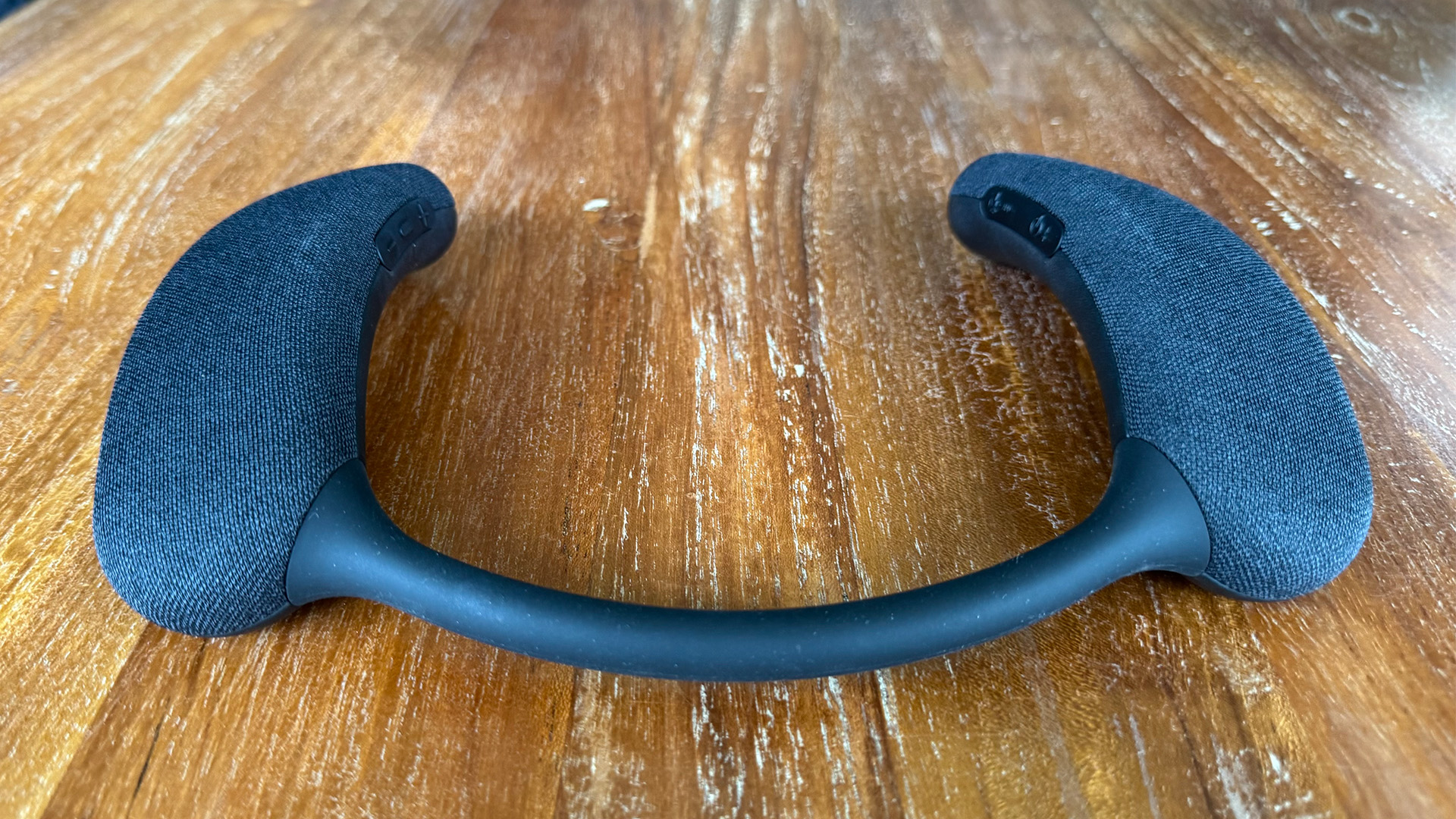
While Sony’s Bravia Theatre U doesn’t necessarily persuade us that the time has come for neckband speakers to escape their niche and go mainstream, its detailed and well-rounded soundstaging makes it surprisingly enjoyable to use and far and away the best example of its type we’ve seen to date.
SCORES
- Sound 4
- Features 4
- Build 5
MORE:
Read our review of the JBL Xtreme 4
Also consider the Sony WH-1000XM5
Best headphones tested by our experts
John Archer has written about TVs, projectors and other AV gear for, terrifyingly, nearly 30 years. Having started out with a brief but fun stint at Amiga Action magazine and then another brief, rather less fun stint working for Hansard in the Houses Of Parliament, he finally got into writing about AV kit properly at What Video and Home Cinema Choice magazines, eventually becoming Deputy Editor at the latter, before going freelance. As a freelancer John has covered AV technology for just about every tech magazine and website going, including Forbes, T3, TechRadar and Trusted Reviews. When not testing AV gear, John can usually be found gaming far more than is healthy for a middle-aged man, or at the gym trying and failing to make up for the amount of time he spends staring at screens.
You must confirm your public display name before commenting
Please logout and then login again, you will then be prompted to enter your display name.
